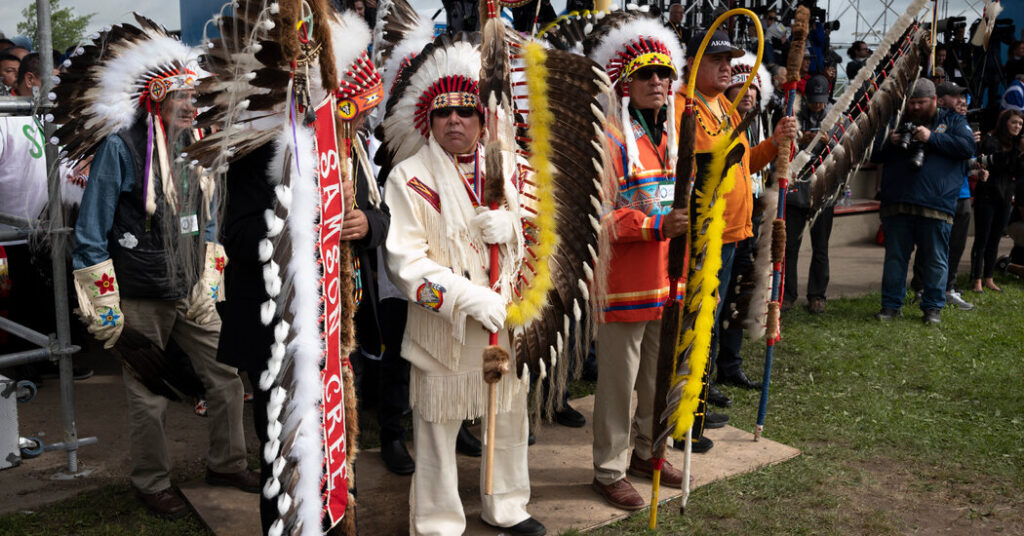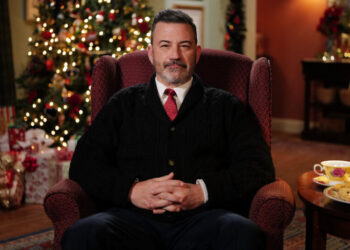The Vatican said on Saturday it will return dozens of cultural items in its museums that were taken from Indigenous communities in Canada more than a century ago, including an Inuvialuit kayak once used for whale hunting.
The announcement followed a yearslong campaign by several Indigenous groups — which was supported by the Canadian government — for the repatriation of the 62 items originally sent to Rome for a 1925 exhibition sponsored by Pope Pius XI.
“His Holiness Pope Leo XIV desires that this gift represent a concrete sign of dialogue, respect and fraternity,” the Vatican said in statement, referring to the current pope.
The call for the items’ return was part of a process that saw Pope Francis apologize to Indigenous people in 2022 for the church’s role in operating residential schools that a national truth and reconciliation commission in Canada characterized as a form of “cultural genocide.” Thousands of children died at the schools from neglect, accidental fires, disease, malnourishment and other forms of abuse.
Joyce Napier, Canada’s ambassador to the Vatican, said on Saturday that Pope Francis discussed the artifacts’ future with Indigenous leaders during his 2022 visit to Canada, where he repeated his apology directly to their communities.
Cody Groat, a Kanyen’kehaka member of the Six Nations of the Grand River and an assistant professor of history and Indigenous studies at Western University in London, Ontario, said he was dismayed the Vatican is not transferring the items directly to Canada’s three main Indigenous groups.
Instead, it is giving them to the Canadian Conference of Catholic Bishops, whose senior leadership met with the Pope on Saturday. Ms. Napier said ownership of the items would belong to the bishops’ conference “very temporarily” and once they were returned to Canada they would be turned over to the Indigenous communities.
“They don’t want this to be the Vatican repatriating directly to communities and they’ve never really articulated why,” Professor Groat said. “We’ve seen a lot of First Nations articulating that the Church wants to maintain power in this relationship.”
He nevertheless called the planned transfer of the artifacts “consequential” and “meaningful.”
Ms. Napier said the artifacts will be flown to Canada by way of Germany in early December and delivered to the Canadian Museum of History in Gatineau, Quebec, across the river from Ottawa.
A “100 percent Indigenous-led process” will determine the origin of the artifacts and determine where they will ultimately be held and displayed, she said.
The items being returned are currently being held in an ethnological museum that holds about 80,000 relics from the 1925 “Vatican Missionary Exposition,” including artifacts from Africa, the Americas, Asia and Oceania. The exhibition drew more than one million visitors.
During a visit to the Vatican Museums in 2022, Indigenous representatives were shown the kayak and a variety of other items, including moccasins, jewelry, embroidered gloves and a sacred ceremonial pipe.
The Vatican describes the items as gifts made to the papacy a century ago.
Professor Groat said that while some of the items were freely given to the Vatican, “that’s obviously the minority situation for a lot of these items.”
“I think it’s a first step and it’s part of a gesture of reconciliation — but there needs to be more truth in this gesture of truth and reconciliation,” said Gloria Bell, an associate professor of art history at McGill University, who published a book on the 1925 Vatican exhibition.
She said she objected to “Pope Leo perpetuating this false narrative of the gift” adding, “They were stolen from Indigenous communities.”
When it called for the return of the kayak and other artifacts in 2021, the Inuvialuit Regional Corporation, the group representing the Inuit of the Western Canadian Arctic, described it as “not the Pope’s kayak.”
It said the boat is “a piece of Inuvialuit history, made by Inuvialuit hands in Inuvialuit traditions.”
The return of the items, Professor Groat said, will not mark the end of discussions between Indigenous people in Canada and the Vatican about pieces in its museum.
“We’re quite confident that there are more items in the Vatican collections,” Professor Groat said. “So we might see this as a necessary first step, working out some of the flaws in the process to build a better process moving forward.”
Elisabetta Povoledo is a Times reporter based in Rome, covering Italy, the Vatican and the culture of the region. She has been a journalist for 35 years.
The post Vatican to Return Indigenous Cultural Items to Canada Taken a Century Ago appeared first on New York Times.




